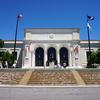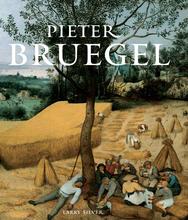More about The Wedding Dance
- All
- Info
- Shop

Contributor
Pieter Bruegel didn’t hold back when depicting peasant scenes.
These compositions are packed with wild dance moves, couples making out, and heavy drinkers. An early biography on the artist claims that Pieter Bruegel, a member of the upper class, disguised himself in peasant garb and attended local festivals for inspiration. While sources aren’t totally certain about this claim, it is definitely amusing to imagine Pieter Bruegel crashing parties like this wedding feast to develop subject matter. One of his most famous scenes includes a Hieronymus Bosch like painting called Netherlandish Proverbs that features over a hundred Flemish proverbs. This particular image is so popular that there are at least 16 known copies of the painting but most of us might know it from the 2008 Fleet Foxes album cover.
The Flemish artist died young, leaving behind about 40 paintings. More than a few of them depict peasant scenes. His sons, including Pieter Brueghel the younger, carried on the legacy of their father by painting similar scenes. In fact, Pieter the Younger’s paintings were so similar that anyone would be able to spot the borrowed elements. In Wedding Dance Scene in Open Air, Pieter Brueghel the Younger took a few characters in this painting and simply reversed them for his own painting.
In both of these paintings, the bride can be spotted in black, wearing her hair down. In The Wedding Dance, she can be seen on the dance floor with someone who many suggest is probably her father. Amusing details abound. On the right of the scene, a figure has his face buried in a carafe. Right below him is a probably inebriated couple making out. The painting features about a hundred figures, and zooming in further reveals a range of party moods in a chaotic scene of dancing and merriment. There has been quite a debate about whether Bruegel’s paintings of peasant life were a critique of lax morality or a humorous take on country life. While some believe the Dutch to be a serious crowd, others, like Walter S. Gibson, argue that the artist’s pursuit was comedic. Perhaps he just wanted to make his patrons laugh.
Sources
- Cohen, Alina. “The Mysteries of Pieter Bruegel the Elder’s Peasant Paintings.” Artsy. August 24, 2018. https://www.artsy.net/article/artsy-editorial-mysteries-pieter-bruegel-…
- Schuster, Clayton, “Pieter Bruegel the Elder,” Sartle, Accessed: September, 1-, 2018. https://www.sartle.com/artist/pieter-brueghel-the-elder
- Valentiner, W. R. "THE WEDDING DANCE BY PIETER BRUEGEL THE ELDER." Bulletin of the Detroit Institute of Arts of the City of Detroit 12, no. 2 (1930): 16-18. http://www.jstor.org/stable/41501459.
Featured Content
Here is what Wikipedia says about The Wedding Dance
The Wedding Dance (sometimes known as The Village Dance) is a 1566 oil-on-panel painting by Pieter Bruegel the Elder. Owned by the museum of the Detroit Institute of Arts in Detroit, Michigan, the work was discovered by its director in England in 1930, and brought to Detroit. It is believed to be one of a set of three Bruegel works from around the same time: The Wedding Dance, The Peasant Wedding (1567) and The Peasant Dance (1569).
The painting depicts 125 wedding guests. As was customary in the Renaissance period, the brides wore black and men wore codpieces. Voyeurism is depicted throughout the entire art work; dancing was disapproved of by the authorities and the church, and the painting can be seen as both a critique and comic depiction of a stereotypical oversexed, overindulgent, peasant class of the times.
Check out the full Wikipedia article about The Wedding Dance















The 60's were a wild and crazy time. The 1560's that is...